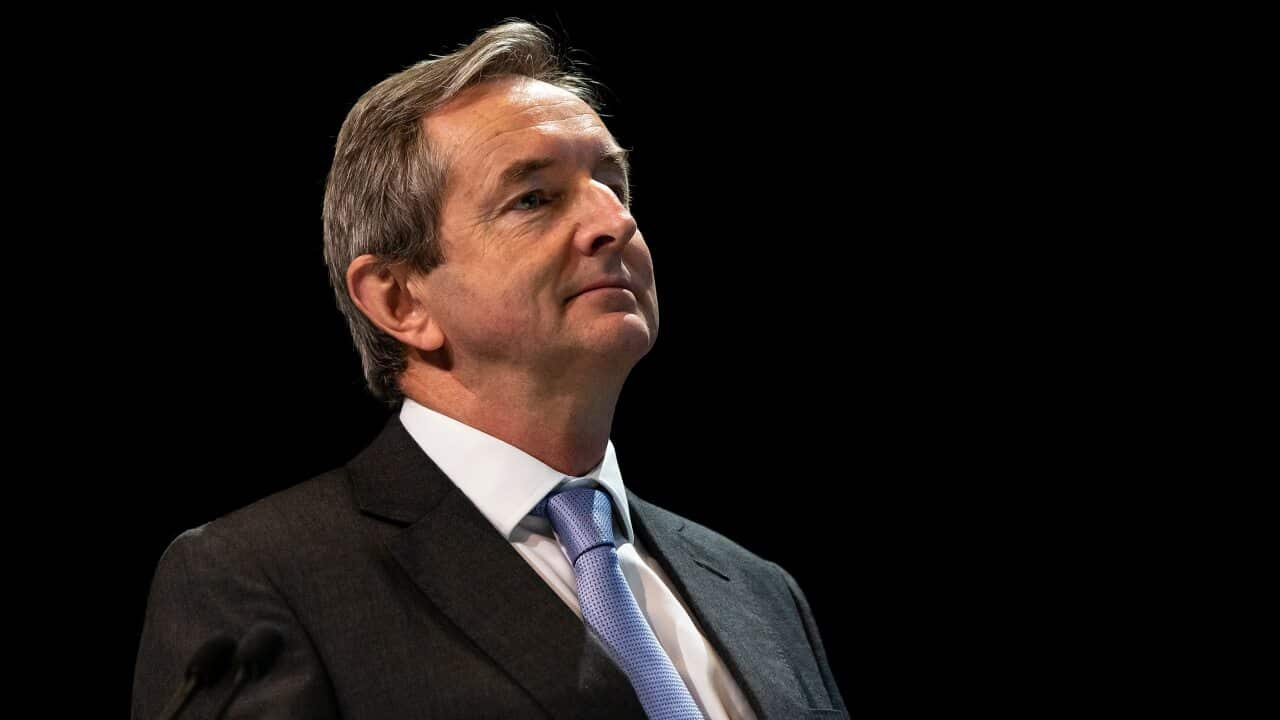Seventy-Six year old Mervyn Bishop has taken thousands and thousands of photos over his storied 60-year career as a photographer.
His most iconic image is that of Prime Minister Gogh Whitlam pouring a handful of sand from Gurindji Country into the hands of Vincent Lingiari at the first land hand back in 1975.
"It's my passion, my life's work you could say," Mervyn Bishop told NITV News. Mr Bishop made a name for himself as Australia's first Aboriginal press photographer, working at the Sydney Morning Herald in the 1960s.
Mr Bishop made a name for himself as Australia's first Aboriginal press photographer, working at the Sydney Morning Herald in the 1960s.

Gough Whitlam pours a soil in Vincent Lingiari's hands, marking the return of the Gurindji peoples' land. Source: Mervyn Bishop
As a young boy growing up in Brewarina, New South Wales - his passion was sparked watching his mother take photographs before being introduced to the tools of the trade by a friend's father in a makeshift darkroom.
"Watching that first print coming out was fantastic, just fantastic. I put in the fixer and looking at it later - 'I did that, I did that!' And really, I was hooked. I couldn't get enough of it," said Mr Bishop. A new exhibition by the National Sound and Film Archive and the Art Gallery of New South Wales has brought together thousands of his photographs, plus sound and video recordings.
A new exhibition by the National Sound and Film Archive and the Art Gallery of New South Wales has brought together thousands of his photographs, plus sound and video recordings.

Mervyn Bishop's 1966 photograph: Cousins Ralph and Jim, Brewarrina 1966 (Supplied: National Film and Sound Archive)
The collection spans the decades of his work as a photographer snapping Prime Ministers, boxing great Lionel Rose, Indigenous ballerina Roslyn Watson, and designer of the Aboriginal Flag, Harold Thomas.
The exhibit also showcases his work documenting the lives and living conditions of Aboriginal families through his work with the Department of Aboriginal Affairs. Mr Bishop traveled the country meeting other Indigenous men, women and children living in tough conditions on the very fringes of society, always being invited into their homes for a cup of tea and a yarn.
Mr Bishop traveled the country meeting other Indigenous men, women and children living in tough conditions on the very fringes of society, always being invited into their homes for a cup of tea and a yarn.

Indigenous boxing great Lionel Rose at a press conference in 1968
"A lot of people were really hesitant for me to take their picture and going into their house - they were shame," he said. The exhibition is a rare opportunity for people to gain a greater insight into Mervyn Bishop the man but also the people in the photographs, said curator, Cody Edgar.
The exhibition is a rare opportunity for people to gain a greater insight into Mervyn Bishop the man but also the people in the photographs, said curator, Cody Edgar.

Mervyn Bishop also photographed the lives of ordinary Aboriginal people
Exhibition: 'precious' photos of Indigenous people's daily lives
Ms Edgar said many of the people Mr Bishop met during his work had never had their photographs taken before they got in front of his lens.
"He has been taking photos of Aboriginal people in their homes, in their employment, everyday lives... From a historical standpoint, some of these are very precious images of their family members that they never knew existed.
"We are trying to paint a picture of who the people he was photographing were. Indigenous people are looked at constantly but how often are we really seen? Mervyn makes us be seen as human beings," Ms Edgar told NITV News.
"It's really special to be able to look at the films and listen to the audio in response to the photographs as well. I think it gives people a change to step back in time." she said.
The Mervyn Bishop exhibition is open at the National Film and Sound Archive in Canberra until August.











